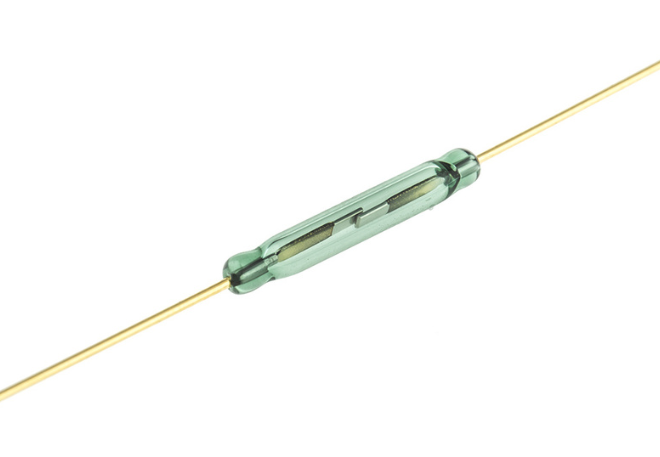The world of electronics is filled with an abundance of components and devices, each with its unique features and applications. Amidst this vast landscape, there exists a small yet crucial component known as the “reed switch.” Here, we delve deep into reed switch technology to understand its workings, applications, and why it is essential in various industries.
What is a Reed Switch?
A reed switch is a simple, magnetically-operated switch made of two ferromagnetic (typically iron-based) reeds sealed within a thin, glass envelope. These reeds act as both the armature and the contact blade. In the absence of a magnetic field, these reeds remain separated, keeping the switch open. When exposed to a magnetic field, the reeds become magnetized and attract each other, closing the switch and allowing current to flow.
History and Origin
The reed switch was invented by Walter B. Ellwood in 1936 while he was working at Bell Telephone Laboratories. This invention came as a solution for long-lasting and reliable switching needs, especially in the realm of telecommunication. Over the years, the simplicity and reliability of reed switches have made them a preferred choice in various applications.
How Does a Reed Switch Work?
- Magnetic Actuation: The primary principle behind the operation of a reed switch is the magnetic actuation. When a magnetic field is brought close to the reed switch, the ferromagnetic reeds within become magnetized. This causes them to attract each other and close the circuit.
- No Physical Contact: Unlike traditional switches, which require physical contact to operate, reed switches are actuated by mere magnetic presence. This means reduced wear and tear, resulting in a longer lifespan.
- Hysteresis: An interesting feature of reed switches is their hysteresis. It’s the property wherein the switch remains closed even when the magnetic field strength drops below the initial actuation level. Only when the magnetic field goes below a specific threshold will the reeds demagnetize and separate.
Types of Reed Switches
There are primarily three types of reed switches:
- Form A – Normally Open (NO): The reeds are open (non-conductive) when there’s no magnetic field and close (become conductive) when a magnetic field is applied.
- Form B – Normally Closed (NC): These switches work oppositely. The reeds remain closed in the absence of a magnetic field and open up when exposed to one.
- Form C – Changeover (SPDT): This type of switch contains a common reed and a normally open and a normally closed reed. It acts as a single pole double throw switch.
Advantages of Using Reed Switches
- Long Life Span: Due to the lack of physical contact during operation, reed switches have an extended operational life, often ranging into millions of cycles.
- Compact Size: Reed switches are typically small, making them ideal for applications where space is a constraint.
- Low Power Requirement: These switches require very little power to operate, which is beneficial in battery-powered devices.
- Highly Reliable: The simplicity of the reed switch design and the absence of physical wear and tear make them highly reliable.
Applications of Reed Switch Technology
- Security Systems: Reed switches are widely used in door and window sensors. When a door or window is closed, a magnet placed near the reed switch keeps it closed, signaling that everything is secure. If the door or window is opened, the magnet moves away, the switch opens, and an alarm is triggered.
- Proximity Sensing: These switches are used in various devices to detect the proximity of an object, such as in level sensors to determine the level of a liquid in a container.
- Consumer Electronics: Many household gadgets, including washing machines and refrigerators, utilize reed switches to determine if a door is open or closed.
- Automotive: Reed switches find their use in car security systems, fluid level monitoring, and even in airbag systems.
- Medical Devices: In some medical infusion pumps, reed switches are used to determine the position of the piston.
Conclusion
Reed switch technology, with its inherent simplicity and reliability, continues to be a cornerstone in various industries. Its adaptability, long lifespan, and wide range of applications make it an indispensable component in modern electronics. As technology continues to advance, one can only imagine the new frontiers reed switches will touch upon in the future.

